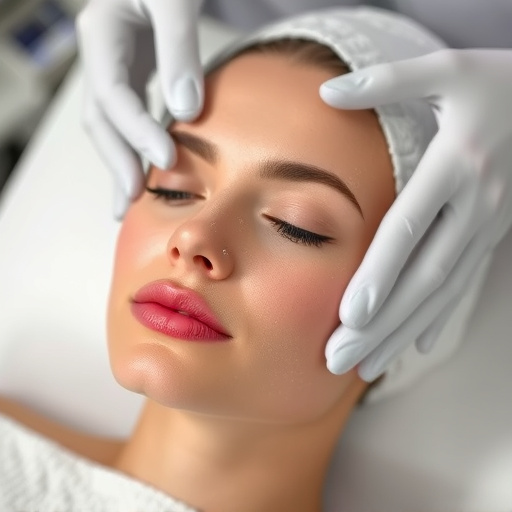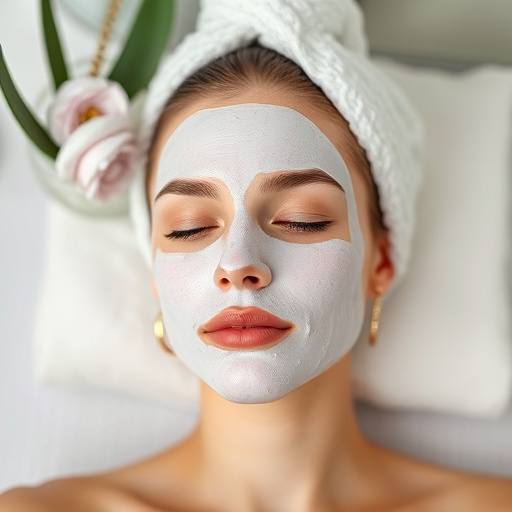Long-Term Strategies for Controlling Chin Hair Growth
Effective chin hair removal requires understanding individual growth patterns influenced by hormones…….
In the realm of personal care and aesthetics, chin hair removal stands as a significant practice, offering individuals a means to achieve smooth, hair-free skin. This process, often sought after for both aesthetic and practical reasons, has evolved significantly over time, reflecting changing societal norms and technological advancements. This article aims to provide an in-depth exploration of chin hair removal, covering its definition, historical context, global impact, economic implications, technological innovations, regulatory landscape, challenges, successful applications, and future prospects. By delving into these aspects, we uncover the multifaceted nature of this practice and its role in the personal care industry.
Definition: Chin hair removal refers to the process of eliminating or reducing facial hair, specifically focusing on the chin area. This can involve various methods, including shaving, waxing, threading, laser treatments, and topical creams. The primary goal is to achieve a smooth, hair-free complexion, enhancing one’s appearance and providing a sense of confidence.
Historical Context: The practice of removing facial hair has deep roots in human history, with evidence suggesting that ancient civilizations like Egypt and Greece engaged in depilatory practices. However, the specific focus on chin hair removal became more pronounced in recent times, influenced by changing fashion trends, beauty standards, and individual preferences. During the 20th century, advancements in technology led to the development of more efficient and permanent hair removal solutions, such as laser treatments, which revolutionized the field.
Significance: Chin hair removal holds a unique position within the broader landscape of personal grooming. It addresses a specific area of concern for many individuals, offering both functional and aesthetic benefits. A smooth chin can contribute to an overall sense of cleanliness and presentation, impacting self-confidence and interpersonal interactions. Furthermore, it is a non-invasive procedure that falls under the realm of self-care, empowering individuals to take control of their appearance.
The influence of chin hair removal extends globally, with varying trends and preferences across different regions:
| Region | Popular Methods | Cultural Significance |
|---|---|---|
| North America | Laser treatments, threading | Emphasis on smooth, flawless skin; influenced by media standards |
| Europe | Waxing, shaving | Diverse preferences, with some regions embracing natural looks |
| Asia | Waxing, laser, threading | Cultural practices and beauty ideals play a significant role; e.g., India’s preference for threadings |
| Middle East | Depilatory creams, waxing | Emphasis on smooth skin as a sign of care and elegance |
| Latin America | Shaving, depilatory creams | Influenced by Western trends and local beauty practices |
These variations highlight the cultural and regional factors shaping the chin hair removal market, with each region contributing unique preferences and methods to the global tapestry.
The global chin hair removal market is a significant segment within the broader personal care industry, characterized by intense competition and rapid innovation:
The economic landscape for chin hair removal attracts substantial investments from various sources:
Chin hair removal has far-reaching economic implications:
Technological innovations have revolutionized chin hair removal, offering more efficient, precise, and permanent solutions:
These advancements not only enhance the effectiveness of chin hair removal but also contribute to a growing trend of personalized, at-home beauty treatments.
The regulatory landscape surrounding chin hair removal varies across jurisdictions, shaped by cultural norms, public health concerns, and industry practices:
Despite its popularity, chin hair removal faces several challenges and criticisms:
To address these challenges, various strategies can be employed:
Background: Sarah, a 25-year-old professional, sought laser hair removal to address excessive chin hair that had become a source of anxiety and self-consciousness.
Procedure: She opted for a series of laser treatments, targeting her chin and upper lip area. A qualified dermatologist performed the procedure, utilizing advanced laser technology.
Outcomes: After several sessions, Sarah experienced significant reduction in chin hair, achieving a smooth, hair-free complexion. This transformation boosted her confidence, impacting both personal interactions and professional presentations.
Scenario: In a diverse metropolitan area, many residents embrace cultural traditions that include threading as a preferred method of facial hair removal.
Process: Local beauty specialists offer specialized threading services, catering to the specific needs of their customers. This traditional practice combines precision and skill, ensuring effective hair removal without discomfort.
Impact: These services thrive due to cultural demand, fostering a sense of community and self-expression. The positive feedback from customers underscores the importance of adapting chin hair removal practices to diverse preferences.
Patient Profile: Emily, a 30-year-old individual with sensitive skin, sought a safe and effective solution for unwanted facial hair.
Treatment Approach: An aesthetic specialist recommended Intense Pulsed Light (IPL) therapy, considering its non-invasive nature and suitability for various skin types.
Results: After a series of IPL treatments, Emily noticed a significant reduction in chin hair, with minimal skin irritation. This case highlights the effectiveness of IPL as an alternative to lasers, catering to individuals with sensitive complexesions.
The future of chin hair removal appears promising, shaped by technological advancements and evolving consumer preferences:
Chin hair removal represents a significant aspect of personal care, offering individuals a means to achieve smooth, hair-free skin. This article has provided a comprehensive overview, exploring historical context, global trends, economic implications, technological advancements, regulatory considerations, challenges, and successful applications. By addressing these dimensions, we uncover the complexity and importance of chin hair removal within the broader personal care industry.
As technology continues to advance and consumer preferences evolve, the future of chin hair removal promises exciting possibilities, ensuring that individuals worldwide can embrace this practice according to their unique needs and aspirations.
Is chin hair removal painful?
The level of pain varies from person to person. Some methods, like shaving and waxing, may cause temporary discomfort or ingrown hairs, while laser and IPL treatments are typically well-tolerated with minimal pain. Local anesthetics can be applied to reduce any sensation during the procedure.
How often is chin hair removal needed?
The frequency depends on the chosen method and individual factors. Shaving requires daily or every few days, whereas waxing can last up to 3-4 weeks. Laser treatments typically need touch-up sessions every 6-12 months for maintaining results.
Are there any long-term effects of chin hair removal?
Permanent methods like laser and IPL can result in reduced or no chin hair growth over time. However, new hair growth is possible as the follicle remains intact. Temporary methods may lead to ingrown hairs or skin irritation if not performed correctly.
Is it safe for all skin types?
While many chin hair removal methods are suitable for most skin types, laser and IPL treatments should be carefully considered for individuals with darker skin tones due to potential side effects on skin pigmentation. Consulting a professional is essential to ensure safety and effectiveness.
Can I do it at home?
Yes, many people opt for at-home chin hair removal solutions, such as shaving, depilatory creams, or smart depilatory tools. These options offer convenience but may not provide the same level of permanence or precision as professional treatments.

Effective chin hair removal requires understanding individual growth patterns influenced by hormones…….

Chin hair growth in individuals with darker skin tones is influenced by genetics and hormones, leadi…….